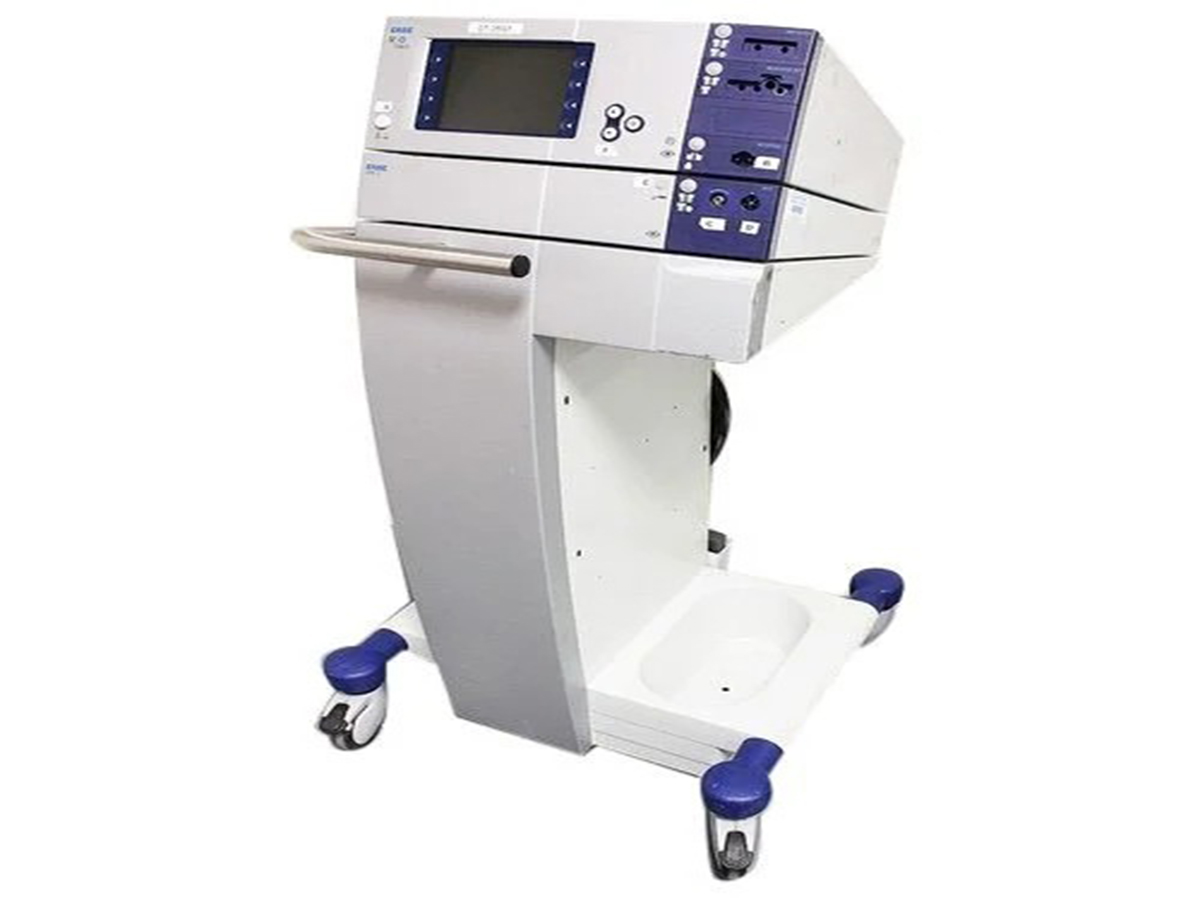Erbe VIO 200 D ARGON GAS

The Erbe VIO 200 D Electrosurgical Unit is often paired with argon gas for specialized procedures using Argon Plasma Coagulation (APC), which is a non-contact coagulation technique. APC is commonly used in gastroenterology, general surgery, and other fields where precise tissue coagulation is required without direct tissue contact.
Argon Plasma Coagulation (APC) Overview:
How APC Works:
Argon gas is ionized into plasma by high-frequency electrical energy generated by the VIO 200 D. The ionized plasma conducts the energy to the target tissue without physical contact, causing coagulation.
This method is particularly effective for superficial bleeding control and can coagulate a wide surface area of tissue in a uniform manner.
Benefits of Argon Gas with Electrosurgery:
Non-Contact Coagulation: The use of argon plasma allows for coagulation without the electrode touching the tissue, reducing the risk of sticking or charring.
Controlled Depth: APC enables precise coagulation to a limited depth, reducing the risk of deeper tissue damage, making it ideal for areas where minimal penetration is needed, such as mucosal surfaces.
Uniform Hemostasis: Argon gas spreads the plasma over the tissue surface, creating an even coagulation zone. This is particularly useful for controlling diffuse bleeding, like from vascular malformations or ulcers.
Reduced Smoke and Odor: Argon gas reduces the production of smoke and charred tissue odor during coagulation, improving visibility for the surgeon and making the procedure more comfortable.
Applications of APC with the VIO 200 D:
Gastroenterology: Commonly used for hemostasis in procedures like gastrointestinal bleeding, treating Barrett’s esophagus, and removing polyps or tumors. APC is especially useful for controlling bleeding in the esophagus, stomach, colon, and rectum.
General Surgery: APC is utilized for the coagulation of liver surfaces, treatment of adhesions, and management of bleeding in open and laparoscopic procedures.
Pulmonology: It is used to control bleeding and treat tumors in the airways.
Dermatology: In skin surgery, APC can be used for superficial coagulation with minimal thermal damage.
Safety Considerations:
Gas Flow Control: The system regulates argon gas flow to maintain a controlled and safe delivery, minimizing the risk of gas embolism.
Tissue Sparing: Since APC is non-contact, it minimizes mechanical trauma to delicate tissues, which is important in areas where precision is crucial, such as endoscopic procedures.
Seamless Integration: The Erbe VIO 200 D works in tandem with Erbe APC systems to deliver a streamlined electrosurgical and APC solution, with intuitive settings for easy switching between standard electrosurgery and argon plasma coagulation modes.
Key APC Functions with the VIO 200 D:
Precise Coagulation Depth: The system can be fine-tuned to achieve coagulation at specific tissue depths, providing surgeons with control over how much tissue is affected.
Low Thermal Spread: APC minimizes heat diffusion to surrounding tissues, reducing the risk of unintended damage.
Improved Visualization: The reduction of smoke and char during surgery helps improve the surgeon’s view of the operating field.
In summary, the use of argon gas with the Erbe VIO 200 D in APC procedures offers significant advantages for precise and controlled coagulation in various surgical fields. It's a widely used technique in areas requiring superficial tissue coagulation with minimal risk to surrounding tissues.